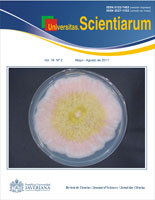Abstract
Objectives. To prepare new N-(1,2,3,4-tetrahydroquinolin-4-yl) pyrrolidin-2-one molecules and to characterize them by spectroscopic methods. Materials and methods. All reagents were purchased from Aldrich, commercial grade. The purity of the products and the composition of the reaction mixtures were monitored by thin layer chromatography over Silufol UV254 chromatoplates (0.25 mm). Product isolation and purification were performed by column chromatography (SiO2), using ethyl acetate. Results. Preparation of new N-(2-nitrophenyl-1,2,3,4-tetrahydroquinolin-4-yl) pyrrolidin-2-ones has been achieved via the one-pot synthesis, based on a BiCl3-catalyzed imino Diels-Alder cycloaddition reaction of toluidine, N-vinylpyrrolidin-2-one and 4-nitro- or 3-nitrobenzaldehydes. The structure of the pyrrolidine derivatives was confirmed by 1H nmr and 13C nmr studies, in addition to inverse-detected 2D NMR experiments and monocrystal X-ray diffraction. Conclusions. An efficient, economic, and fast synthetic route (multi-component imino Diels-Alder reaction) was employed in the construction of several new tetrahydroquinoline derivatives, useful and attractive rigid skeleton with well-defined stereochemistry.
Key words: tetrahydroquinoline derivatives, N-substituted pyrrolidin-2-ones, three component imino Diels-Alder reaction, one-pot synthesis.
Univ. Sci. is registered under a Creative Commons Attribution 4.0 International Public License. Thus, this work may be reproduced, distributed, and publicly shared in digital format, as long as the names of the authors and Pontificia Universidad Javeriana are acknowledged. Others are allowed to quote, adapt, transform, auto-archive, republish, and create based on this material, for any purpose (even commercial ones), provided the authorship is duly acknowledged, a link to the original work is provided, and it is specified if changes have been made. Pontificia Universidad Javeriana does not hold the rights of published works and the authors are solely responsible for the contents of their works; they keep the moral, intellectual, privacy, and publicity rights. Approving the intervention of the work (review, copy-editing, translation, layout) and the following outreach, are granted through an use license and not through an assignment of rights. This means the journal and Pontificia Universidad Javeriana cannot be held responsible for any ethical malpractice by the authors. As a consequence of the protection granted by the use license, the journal is not required to publish recantations or modify information already published, unless the errata stems from the editorial management process. Publishing contents in this journal does not generate royalties for contributors.



